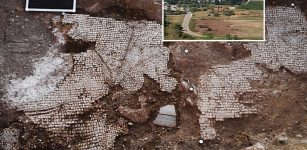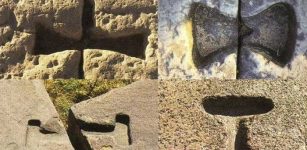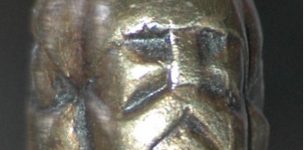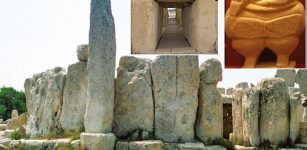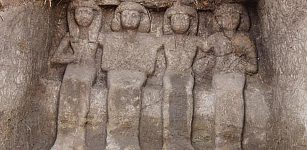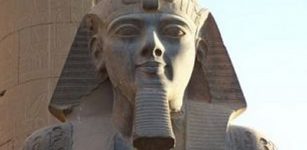Paleontologists Find New Predatory Dinosaur With Unique ‘Eyebrow’
Eddie Gonzales Jr. – AncientPages.com – Theropod dinosaurs are a crucial group that includes famous predators like Tyrannosaurus, Allosaurus, and modern birds. Various theropod species existed during the Mesozoic Era, known as the age of dinosaurs.
Reconstruction of Alpkarakush kyrgyzicus. Credit: Joschua Knüppe
Allosaurus roamed North America and southwestern Europe during the Jurassic, while Metriacanthosaurs inhabited China. However, the area between central Europe and East Asia remained unexplored, with no known large Jurassic predatory dinosaurs, much like how lions primarily inhabit Africa and tigers in Asia today.
A new discovery has now significantly altered the situation: Alpkarakush kyrgyzicus is the name of the first theropod dinosaur found in Kyrgyzstan. The first remains of the fossil were discovered in 2006 by Kyrgyz paleontologist Aizek Bakirov.
The discovery site is located in the mountainous desert regions near the city of Tashkumyr in western Kyrgyzstan. The sediments of the Balabansai Formation exposed here were deposited during the Middle Jurassic period around 165 million years ago.
During several excavation campaigns between 2006 and 2023, skull bones, dorsal and pelvic vertebrae, fragments of the shoulder girdle and forelimbs as well as the almost complete pelvic girdle and hind limbs of a predatory dinosaur about 8–9 meters long were recovered.
It is a new genus and species with previously unknown characteristics. Particularly impressive is its extremely protruding “eyebrow” on the so-called postorbital bone, a skull bone behind the eye opening, which indicates the presence of a horn at that point. Other unique features are found on the dorsal vertebrae and the femur.
Comparisons with numerous other theropods show that the new species belongs to the metriacanthosaurids, and it is closely related to the large predatory dinosaurs of East Asia. Paleontologists suggest the origin of metriacanthosaurids and other important theropod groups in Southeast Asia, from where they spread to other continents via Central Asia and Europe.
“Although the affiliation of Alpkarakush with the metriacanthosaurids is not necessarily a surprise, this discovery closes a huge gap in our knowledge of the Jurassic theropods. It leads us to important new insights into the evolution and biogeography of these animals,” says Prof. Oliver Rauhut from the Bavarian Collection of Paleontology and Geology in Munich (SNSB-BSPG) and first author of the study published in the Zoological Journal of the Linnean Society.
Outline reconstruction of Alpkarakush kyrgyzicus, with recovered elements indicated. Scale bar is 1 m.
The remains of a second, slightly smaller specimen of Alpkarakush kyrgyzicus were also found at the site. Examination of the internal bone structure revealed that the large specimen was almost an adult, at least 17 years old, and certainly already sexually mature, while the smaller individual is a juvenile. Maybe a parent animal was on tour with its young 165 million years ago.
Digital photogammetric 3D models of all relevant bones of the Alpkarakush were generated. “These models are now available online and allow researchers worldwide to carry out follow-up studies and make 3D prints,” co-author Dr. Oliver Wings, Director of the Bamberg Natural History Museum, said in a press release.
The fossil is named after Alpkarakush, a giant bird in the mythological Kyrgyz “Manas” epic, which often comes to the aid of the heroes in critical moments. The species name “kyrgyzicus” refers directly to the Kyrgyz Republic, the origin of the new predatory dinosaur.
Alpkarakush kyrgyzicus could even become the first original dinosaur skeleton ever to be exhibited in Kyrgyzstan: if enough supporters are found, a reconstruction is planned with the original bones in the National Historical Museum in Bishkek, pending the acquisition of the necessary funding.
Written by Eddie Gonzales Jr. – AncientPages.com - MessageToEagle.com Staff Writer







